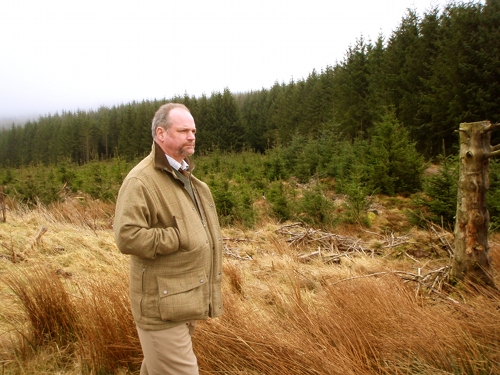We need home grown timber if sustainable development is to be fully realised. A healthy supply of home grown timber will help fuel our energy needs and provide a low carbon building material for all future development. A decent sized UK forest industry could remove the need for imported timber and help to prevent illegal deforestation. There is at present no where near enough new planting taking place to provide for our future needs.
Before we can debate suitable silvicultural methods for particular locations or even begin a process of communication that enables the public to understand timber harvesting and its benefits, together with discussions at a local level to help further the potential of forestry as a hub for a new rural economy, we must get real about the need for forestry plantations.
Furthermore when so much ‘red tape’ cutting is taking place, why is an industry which is at the forefront of a healthy rural economy and at the forefront of sustainable development, subject to increasing amounts of bureaucracy and constraints – forestry is the quiet gentleman of land management and it has suffered as a result of not shouting against other interests.
Raymond Henderson, Head of Bidwells Forestry Team, has highlighted some facts from Scotland which expose a severe disparity in funding, procedure and lobbying power, which are very useful as case study to further forestry in England at a time when it is ‘up for discussion.’
Agriculture has a very good lobbying system. I can accept the argument for food production but there are thousands of hectares out there with no sheep on them, and little likelihood of them returning. We need food but we need timber too. Everyone in the UK uses one tonne of timber each year and we are nowhere near being able to supply that amount.
Looking at these figures, it appears that for every 1% of land use, on average forestry produces 1,100 jobs, agriculture produces 670.
Each forestry job seems to be costing – in terms of public funding – £1,842 per year. In agriculture the equivalent figure seems to be £14,000
In terms of GVA to the Scottish economy, forestry’s 1% contribution is publically funded to the tune of £35 million. The equivalent rate for agriculture is £528 million.
Forestry and farming could complement one another.
Forestry has come of age as the woodlands that were planted in the 1960s and 70s are now being harvested. But concerns are growing that the supply of commercial timber, mainly coniferous, will tail off as there has been very little planting over the last 15 years. Targets to increase forest cover to 25% of land area have been quietly downgraded to an aspiration. Some 13,000 hectares would have to be planted every year until 2050 to reach 25%. The new target seems to be to plant only 10,000 hectares each year for 10 years. The problem is that current planting rates fall well short of even that modest target. Last year only 4,000 hectares were planted in Scotland and not all of that would be in commercial coniferous forest.
There is nothing like enough to meet the requirements of a sawmill industry which is one of the best equipped and most efficient in Europe.
Encouraging 20,000 farmers and crofters to put in 12 acres of trees per year to achieve targets would not yield the type of timber needed by processors.
Forestry is a vibrant industry. But it could potentially be even more vibrant if the reins were loosened up.




























